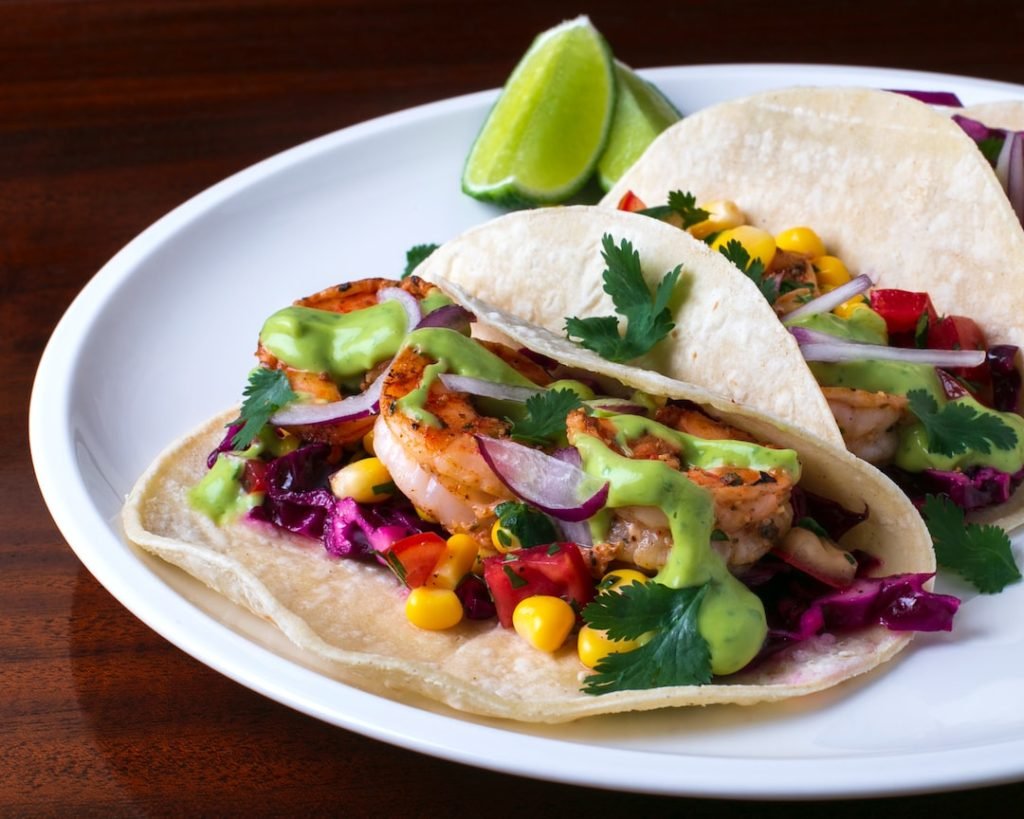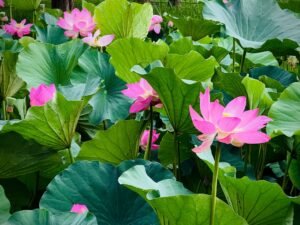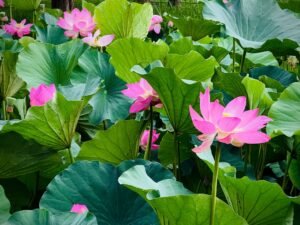

Top Norwegian Expressions About Food and Drink
Norway, known for its stunning landscapes and rich cultural heritage, also boasts a unique and diverse food culture. Norwegian cuisine is deeply rooted in the country’s history, geography, and traditions. To truly understand and appreciate Norwegian food culture, one must delve into the language that accompanies it. The Norwegian language reflects the country’s food culture through its vocabulary, expressions, and descriptions of dishes and drinks. In this article, we will explore the significance of food and drink in Norwegian culture, learn essential Norwegian words for foodies to know, discover how Norwegians describe their favorite dishes and drinks, and understand the role of food language in Norwegian literature and art.
Table of Contents
ToggleExploring the Norwegian food culture through language
Language plays a crucial role in understanding a culture’s food culture. It provides insight into the ingredients, cooking techniques, and traditions that shape a nation’s cuisine. In Norway, the Norwegian language reflects the country’s food culture in various ways. For example, the abundance of words related to fish and seafood highlights Norway’s strong connection to its coastal waters. Additionally, the use of words like “fjell” (mountain) and “skog” (forest) in culinary terms emphasizes the importance of local and seasonal ingredients in Norwegian cuisine.
The significance of food and drink in Norwegian culture
Food and drink hold great significance in Norwegian culture. They play a central role in traditions and celebrations throughout the year. For instance, during Christmas, Norwegians indulge in a variety of traditional dishes such as lutefisk (dried fish) and pinnekjøtt (cured lamb ribs). These dishes are not only delicious but also symbolize the country’s agricultural heritage and connection to nature.
Furthermore, Norwegians place great importance on using local and seasonal ingredients in their cuisine. This emphasis on freshness and sustainability is reflected in their language as well. Words like “bær” (berries), “poteter” (potatoes), and “rotgrønnsaker” (root vegetables) are commonly used to describe the abundance of produce available in Norway.
Top 10 Norwegian words for foodies to know
To fully immerse oneself in Norwegian food culture, it is essential to learn some key vocabulary. Here are ten essential Norwegian words for foodies to know:
1. Mat (food) – Pronounced “maht,” this word encompasses all types of food and is used in various contexts.
2. Fisk (fish) – Pronounced “fisk,” this word reflects Norway’s strong fishing industry and the importance of seafood in Norwegian cuisine.
3. Ost (cheese) – Pronounced “oost,” cheese is a beloved ingredient in Norwegian cooking, and there are many regional varieties to explore.
4. Kjøtt (meat) – Pronounced “shyutt,” this word refers to all types of meat, including beef, pork, and lamb.
5. Brød (bread) – Pronounced “brood,” bread is a staple in Norwegian cuisine, with various types available, including flatbread and wheat bread.
6. Smør (butter) – Pronounced “smur,” butter is a common ingredient used in cooking and baking in Norway.
7. Kaffe (coffee) – Pronounced “kah-feh,” coffee is a beloved beverage in Norway, and the country has a strong coffee culture.
8. Øl (beer) – Pronounced “ool,” beer is a popular alcoholic beverage in Norway, with many local breweries producing unique flavors.
9. Sjokolade (chocolate) – Pronounced “shoh-koh-lah-deh,” chocolate is enjoyed as a treat or used as an ingredient in desserts.
10. Dessert (dessert) – Pronounced “deh-sehrt,” this word refers to sweet dishes served after a meal, such as cakes, pastries, and puddings.
How Norwegians describe their favorite dishes and drinks
Norwegians have a rich vocabulary when it comes to describing their favorite dishes and drinks. They often use adjectives and expressions to convey their appreciation for the flavors, textures, and overall experience of a meal. Some common adjectives used to describe Norwegian cuisine include “delikat” (delicate), “smakfull” (tasty), “frisk” (fresh), and “saftig” (juicy). These words highlight the emphasis on quality ingredients and the enjoyment of natural flavors in Norwegian cooking.
When discussing their favorite drinks, Norwegians may use expressions like “godt balansert” (well-balanced), “fruktig” (fruity), “tørr” (dry), or “friskt og syrlig” (fresh and acidic). These descriptions help convey the nuances of different beverages and showcase the appreciation for craftsmanship and flavor profiles in Norwegian drinks.
Norwegian expressions for enjoying a meal with friends and family
Mealtime in Norway is often a communal affair, where friends and family gather to enjoy good food and company. During these gatherings, Norwegians use various phrases and expressions to enhance the dining experience. For example, before starting a meal, it is customary to say “vel bekomme” (enjoy your meal) or “takk for maten” (thank you for the food) as a way of expressing gratitude to the host or chef.
During the meal, phrases like “skål” (cheers) are used when raising glasses for a toast. Additionally, Norwegians may say “god appetitt” (good appetite) to wish each other a hearty meal. These expressions not only create a warm and welcoming atmosphere but also reflect the importance of hospitality and togetherness in Norwegian culture.
The evolution of Norwegian food language over time
Like any language, Norwegian food language has evolved over time, influenced by historical events, cultural exchanges, and globalization. Traditional Norwegian cuisine was heavily influenced by the country’s agricultural heritage and reliance on local ingredients. However, with increased trade and immigration, Norwegian cuisine has become more diverse, incorporating flavors and techniques from other cultures.
This evolution is reflected in the language used to describe Norwegian food. For example, words like “pasta” and “pizza” have been adopted from Italian cuisine, while terms like “sushi” and “taco” have become part of everyday Norwegian vocabulary due to the popularity of international cuisines. This blending of culinary traditions showcases Norway’s openness to new flavors and its willingness to embrace global influences.
The role of food language in Norwegian literature and art
Food language plays a significant role in Norwegian literature and art, as it helps create vivid imagery and evoke emotions. In literature, authors often use descriptions of food to set the scene, establish cultural context, or convey a character’s personality. For example, in Knut Hamsun’s novel “Hunger,” the protagonist’s hunger is described in vivid detail, highlighting the desperation and poverty he experiences.
In art, food is often depicted as a symbol of abundance, pleasure, or social status. Paintings by artists like Edvard Munch often feature scenes of feasts or gatherings, showcasing the importance of food in Norwegian culture. Additionally, food language is used in poetry and songs to celebrate traditional dishes or express nostalgia for childhood memories associated with certain foods.
Norwegian expressions for expressing gratitude for a delicious meal
In Norwegian culture, it is customary to express gratitude for a delicious meal by thanking the host or chef. Some common phrases used for this purpose include “takk for maten” (thank you for the food), “det smakte utmerket” (it tasted excellent), or simply “dette var nydelig” (this was delicious). These expressions not only show appreciation for the effort put into preparing the meal but also create a sense of connection and gratitude within the dining experience.
How to order food and drinks like a local in Norway
When visiting Norway, it can be helpful to know some phrases and expressions for ordering food and drinks in restaurants and cafes. Here are a few tips to help you order like a local:
1. Start by saying “hei” (hello) or “god dag” (good day) to greet the server.
2. To ask for a menu, say “kan jeg få se menyen, takk?” (can I see the menu, please?).
3. When ready to order, say “jeg vil gjerne ha…” (I would like to have…) followed by the name of the dish or drink you want.
4. If you have any dietary restrictions or allergies, it is essential to communicate them clearly. You can say “jeg har allergi mot…” (I have an allergy to…) or “jeg er vegetarianer/veganer” (I am a vegetarian/vegan).
5. To ask for the bill, say “kan jeg få regningen, takk?” (can I have the bill, please?).
Remember to use polite phrases like “takk” (thank you) and “vær så snill” (please) throughout your interactions to show respect and courtesy.
The cultural significance of traditional Norwegian food and drink expressions
Traditional Norwegian food and drink expressions hold historical and cultural significance. They often reflect values, traditions, and regional identities. For example, expressions like “skål” (cheers) are used during toasts to celebrate special occasions and foster a sense of camaraderie. Similarly, phrases like “vel bekomme” (enjoy your meal) and “takk for maten” (thank you for the food) highlight the importance of hospitality and gratitude in Norwegian culture.
These expressions also serve as a way to preserve and pass down cultural traditions. By using traditional food and drink expressions, Norwegians honor their heritage and create a sense of continuity between generations. They provide a connection to the past and help maintain cultural identity in an ever-changing world.
Exploring Norwegian food culture through language is a fascinating journey that reveals the country’s history, traditions, and values. The Norwegian language reflects the significance of food and drink in Norwegian culture, with words, expressions, and descriptions that capture the essence of Norwegian cuisine. By learning essential Norwegian food-related vocabulary, understanding how Norwegians describe their favorite dishes and drinks, and appreciating the role of food language in literature and art, one can gain a deeper understanding of Norwegian food culture.
So, whether you’re planning a trip to Norway or simply want to expand your culinary horizons, take the time to explore Norwegian cuisine and language. Try new dishes, engage in conversations with locals, and savor the unique flavors that Norway has to offer. By immersing yourself in the language of food, you’ll not only enhance your gastronomic experiences but also gain a deeper appreciation for Norwegian culture as a whole.
FAQs
What are some common Norwegian expressions related to food and drink?
Some common Norwegian expressions related to food and drink include “skål” (cheers), “matpakke” (packed lunch), “smørbrød” (open-faced sandwich), and “kaffe og kake” (coffee and cake).
What is the meaning of “skål”?
“Skål” is a Norwegian expression used to toast or cheers before drinking.
What is a “matpakke”?
A “matpakke” is a packed lunch that is commonly eaten in Norway. It typically consists of bread, cheese, and meat.
What is a “smørbrød”?
A “smørbrød” is an open-faced sandwich that is commonly eaten in Norway. It typically consists of bread, butter, and various toppings such as cheese, meat, and vegetables.
What is “kaffe og kake”?
“Kaffe og kake” is a Norwegian expression used to refer to the tradition of drinking coffee and eating cake together.
What are some other Norwegian expressions related to food and drink?
Other Norwegian expressions related to food and drink include “frokost” (breakfast), “middag” (dinner), “kveldsmat” (evening snack), and “pølse i lompe” (hot dog in a potato pancake).
What is the significance of food and drink in Norwegian culture?
Food and drink are an important part of Norwegian culture, with many traditional dishes and customs surrounding meals. Meals are often seen as a time for socializing and connecting with others.
If you want to learn Norwegian, you can register for classes here. We look forward to hearing from you and helping you become fluent in Norwegian!
Refer a friend and get $150. Join the program here
If you want to learn Norwegian, you can register for classes here. We look forward to hearing from you and helping you become fluent in Norwegian.





